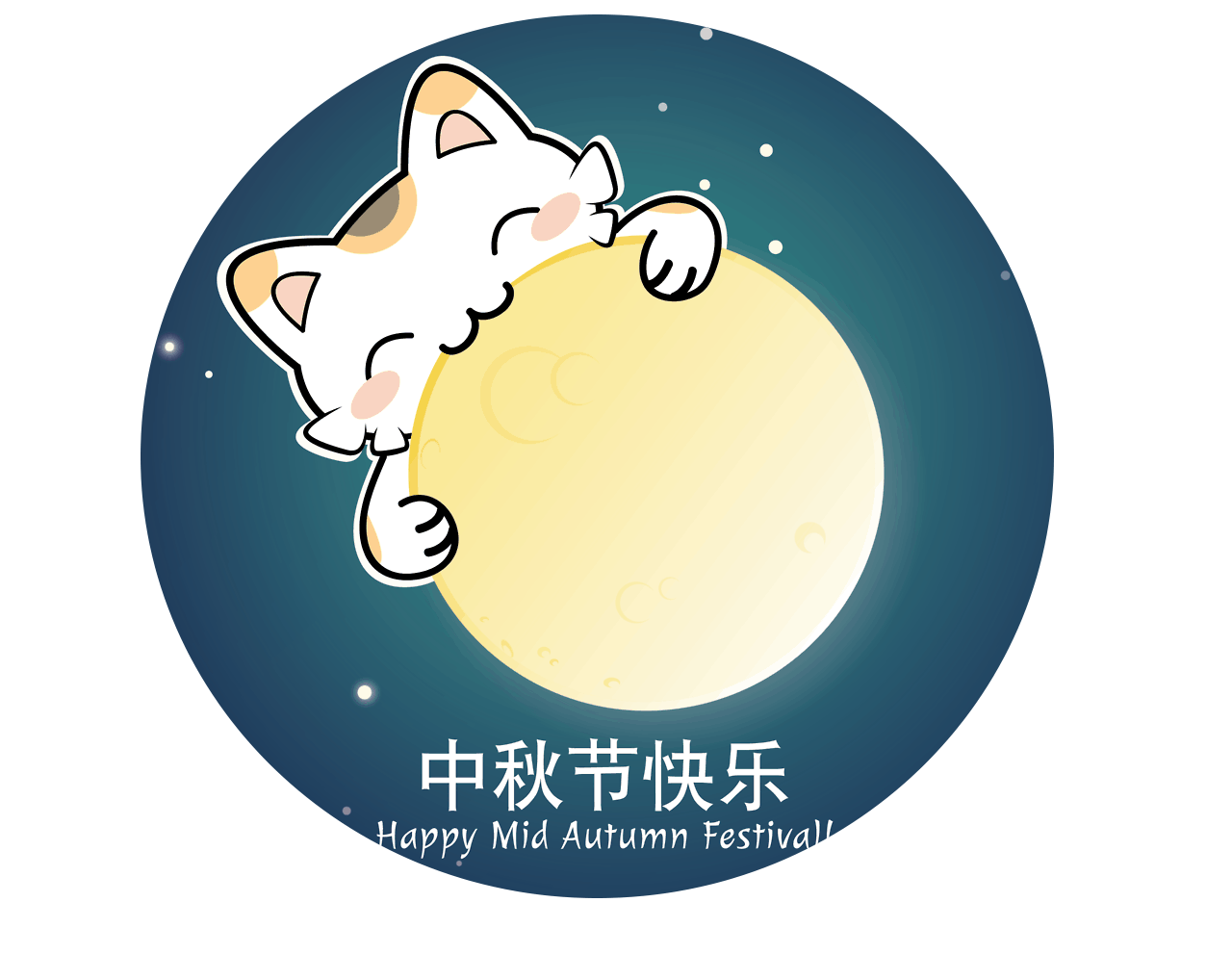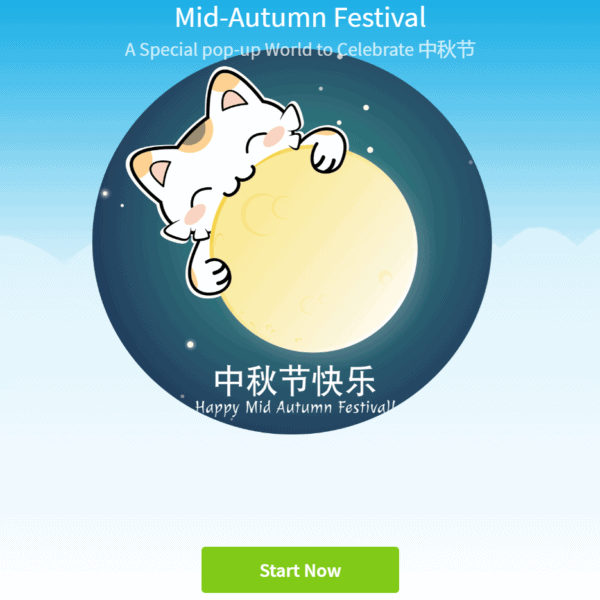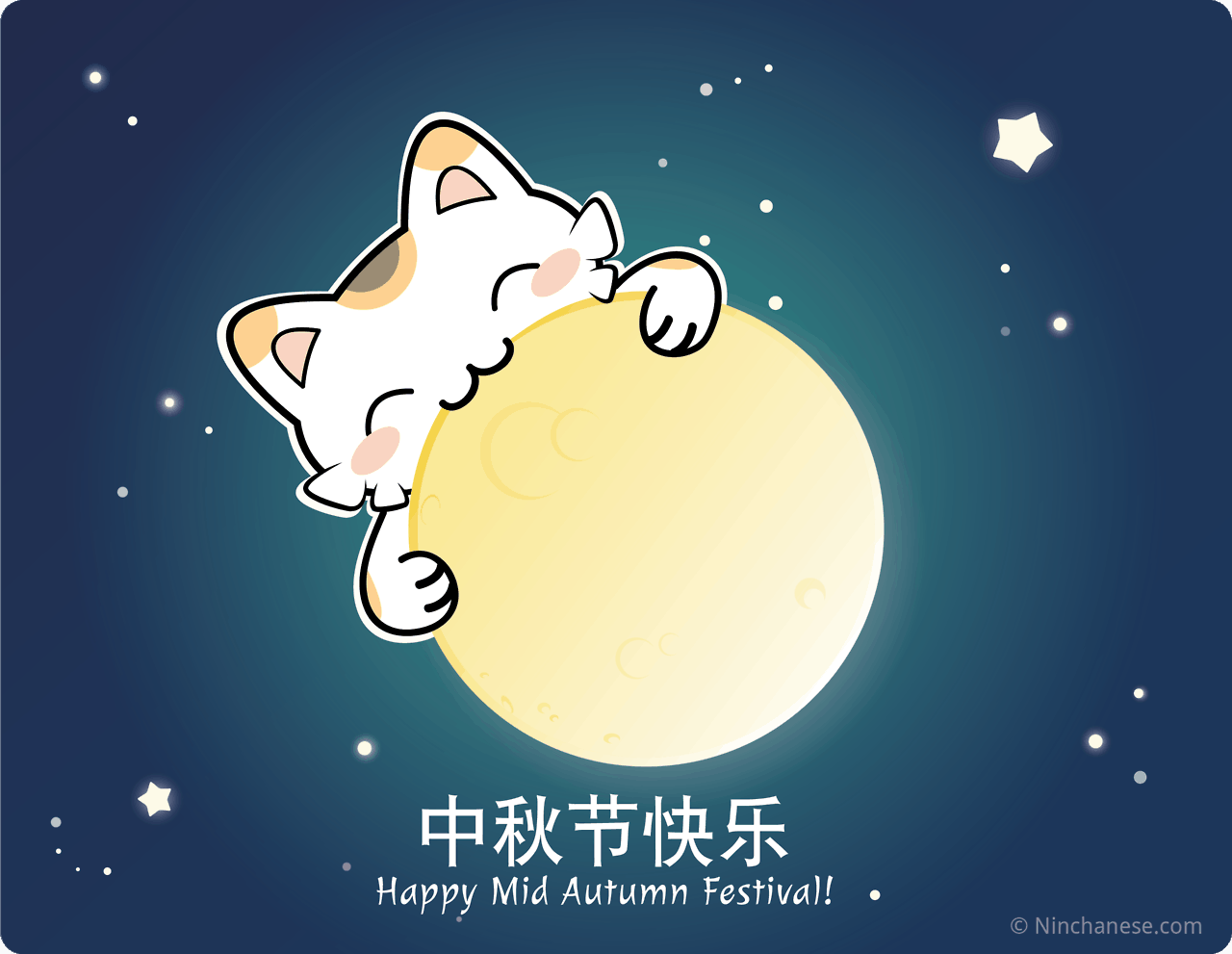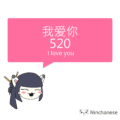Lucky us, there’s a delicious Chinese festival happening right now! It’s time for 中秋节, the Mid-Autumn festival! What better way to celebrate a festival than learning the meowsomest Mid-Autumn festival traditions, food, and stories? Read on, for, in this article, we’ll see what the Mid-Autumn festival is all about. We’ll also explore how China celebrates this festival and its origins!
Best wishes for the Mid-Autumn Festival
中秋节快乐!
Zhōng qiū jié kuài lè!
Happy mid-autumn festival!
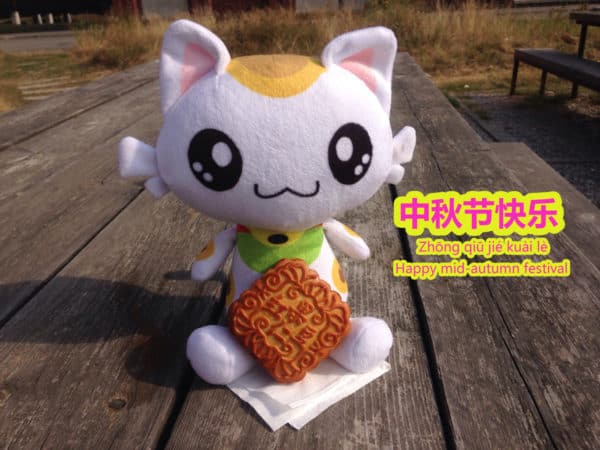
Why is the festival called the “Mid-autumn” Festival?
First things first. If you break down the Chinese name 中秋节 (Zhōng qiū jié), you get 中[zhōng] (middle) + 秋[qiū] (autumn) + 节[jié] (holiday). Why is that?
To us, the name of this festival, which is “Mid-autumn Festival,” begs the question: Why is this festival called the Mid-Autumn festival held on the first day of Autumn?
This year, the Chinese Mid-Autumn festival happens to fall on September 21st, the beginning of Fall. But that’s not what one should focus on. What’s important to know is that this festival, like all Chinese festivals, follows the lunar calendar. 中秋节 is celebrated each year on the 15th day of the 8th lunar month. Because that’s the day the Autumn harvest ends. Incidentally, 秋 also means “Harvest time.” The 15th is also the middle of the month, and the 8th lunar month is the middle of autumn. Hence the name, Mid-Autumn.
In our western calendar, its date changes slightly every year and ranges from mid-September to early October.
A magical way to celebrate the full moon
Okay, now that’s out of the way, what is this Chinese festival? What magical mid-autumn festival traditions are there? What do we do during it? This traditional Chinese festival is all about the full moon.
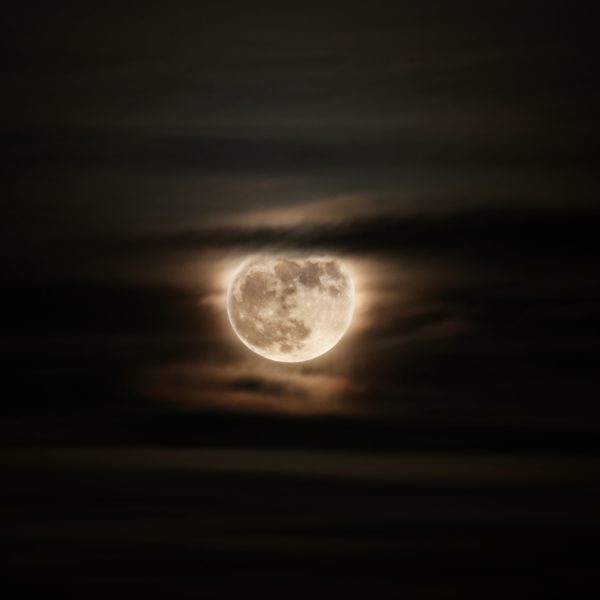
When the moon shines the brightest, Chinese people worldwide celebrate the Mid-Autumn festival.
Mid-autumn Festival Traditions
Gaze at the moon and make wishes
On this day, in China, the moon shines at its brightest. The Chinese believe it’s the purrfect time to send prayers for good luck. In ancient times, they would wish for a great next harvest next year, and now, they wish each other luck in life and business. That’s why the festival is sometimes called the Moon festival. Lanterns are often lit and sent out into the starry sky, carrying with them our wishes.
Join in the fun with mooncakes
What else? Ah yes, you’re going to like this next part. The mooncake festival is all about eating, and everyone should partake in at least one of the delicious Mid-Autumn festival food traditions. Yes, to celebrate the moon, we eat delicious mooncakes filled with all sorts of things. The fillings may be traditional lotus seed paste, egg yolk, red bean paste, or more innovative. That’s why this festival is also sometimes called the Mooncake festival.
The mooncakes are elaborately decorated, with patterns usually depicting the festival’s legends. Mooncakes now range from the traditional kind, rich and dense, with usually a duck egg in the center,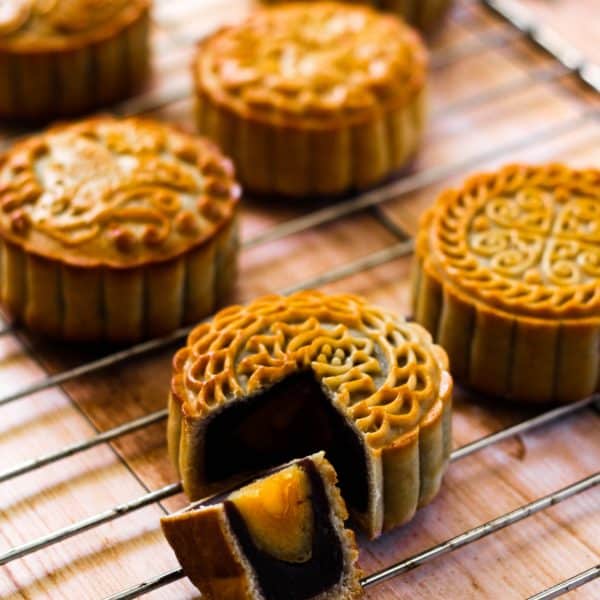
to modern takes on them, with a more delicate flavor and made with rice flour, such as the snowflake skin mooncakes.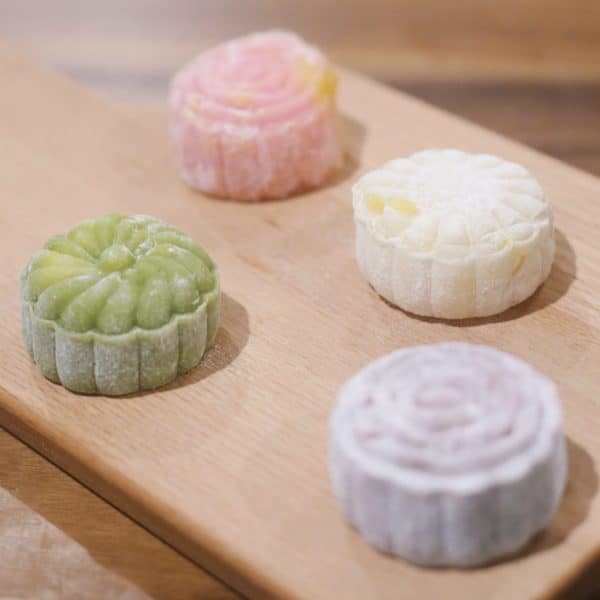
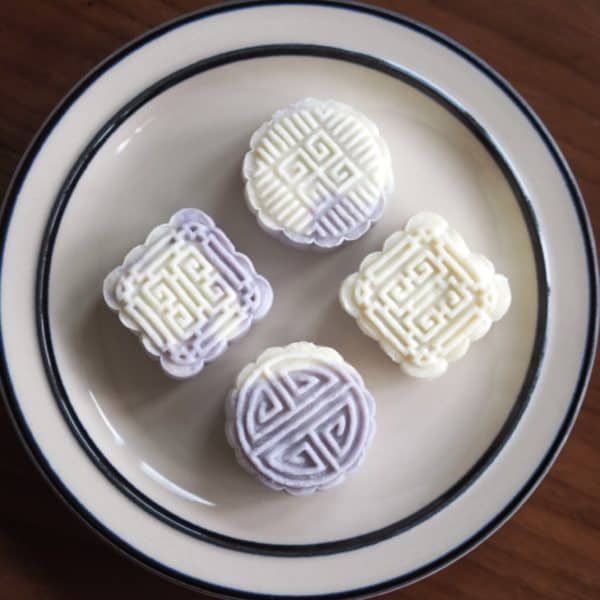
Kick off October with some quality family time
The full moon also represents a family reunion. Due to that, the festival is also a big family moment, and getting together is a crucial Mid-Autumn festival tradition. Everyone gets three days off for it! If you’re in China or with a Chinese family, you’ll typically have a big celebratory meal with your family. You’ll eat, talk and sit together and enjoy the glorious moon. You can also have this experience with your Nincha family on the Ninchanese app in a special Mid-Autumn-themed world! In the Dialogue, you’ll be learning with Yocha a quote from a famous Mid-Autumn poem and will chat about the Mid-Autumn Festival.
When did the Mid-Autumn festival really begin?
No one knows for sure, but we do know this festival is thousands of years old!
Over 2000 years ago
The earliest records of the Mid-Autumn festival found are over 2000 years old, during the Han Dynasty.
In the 10th century AD, the festival date became fixed.
From there, the celebration steadily grew in popularity. As early as the Tang Dynasty (618-907 AD), the festival began being celebrated all over China, with much of the Mid-Autumn festival traditions appearing then. At the time, the date for the Mid-Autumn festival still varied. In the Song dynasty (960 – 1279 AD), the festival’s date became officially fixed. It has become a yearly custom every since and is still a festival that means a lot to Chinese people worldwide. Did you know, however, that this festival only became a public holiday in 2008?
The Legends of the Autumn Full Moon Festival
Many have written poems and stories about the moon festival, and there are many legends around the Mid-Autumn festival. Among those, Chang’e Flying to the Moon is the most widely known.
Chang’e, Goddess of Heaven
It goes like this:
Once upon a time, Chang’e was married to Hou Yi, a real hotshot at the time (what?! he literally was! He was a heroic archer who shot down nine of the ten suns believed to have existed in ancient times).
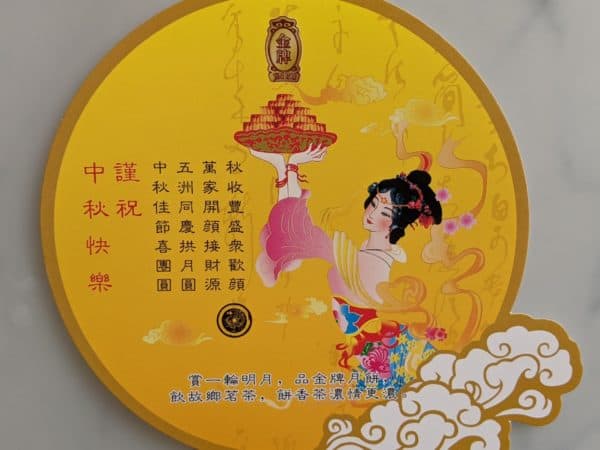
Chang’e bringing mooncakes on a platter for the Chinese Mid-Autumn festival
Tasked with protecting an elixir that would allow Houyi to ascend directly to Heaven, Chang’e found herself forced to drink it. Then, desperate to stay close to her love, she managed to fly to the moon, the nearest place to Earth in heaven. There, she eventually adopted an immortal pet rabbit (that’s a different story), and that’s why ever since she’s been represented this way.

Chang’e and her rabbit
It is believed that Hou Yi, who sorely missed Chang’e, would serve the food she liked best when the full moon shone the brightest. Awwww. And that’s how, according to the legend, the Mid-Autumn festival began.
Mooncakes to fight the Mongols
There is another Mid-Autumn folktale so meowsome it sounds like a legend, except it actually happened.
In the late Yuan Dynasty (1271 to 1368 AD), people were unhappy with their rulers, the Mongols, and so, the resistance wanted to plot an uprising. To keep their messages hidden, a counselor had the brilliant idea of hiding notes inside the mooncakes, indicating when the uprising should occur. The revolt was very successful, and so, from then on, each year, the new ruler rewarded his subjects with mooncakes to commemorate that fateful day.
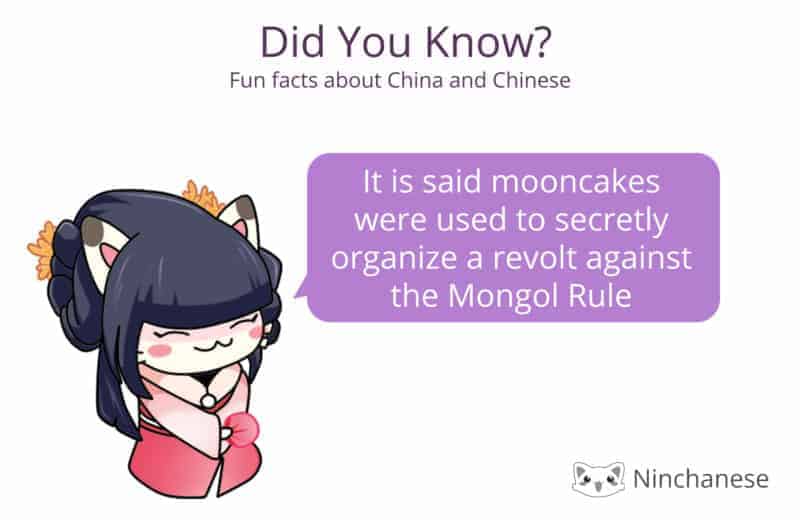
Since then, eating mooncakes took on a different meaning and has become even more of a tradition.
Talk about the Mid-Autumn festival in Chinese
Want to discover more about this festival? Then the new content on Ninchanese is precisely what you need. So check it out now; it’s available for free, this week only!
Three Special Event Stages for you on Ninchanese
There’s a new pop-up advanced world for you to discover for the occasion! Join in the Mid-Autumn festival celebrations with this themed exclusive world. In it, you can:
- Learn vocabulary to understand and discuss the Mid-Autumn festival
- Build sentences to talk and wish someone a happy Mid-Autumn festival in Mandarin
- Express yourself in Chinese: Learn to speak about the Mid-Autumn festival in the new dialogue
- Train your ear: Listening practice to be ready to talk about the festival in Chinese
The best part? It’s free all this week! So hurry! It’ll soon be gone.
Best paired with a yummy mooncake to keep your brain juices flowing. Enjoy and happy Chinese learning!
The Nincha Team
Stay in touch with us on Facebook, Twitter, Instagram, and Pinterest.

